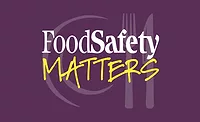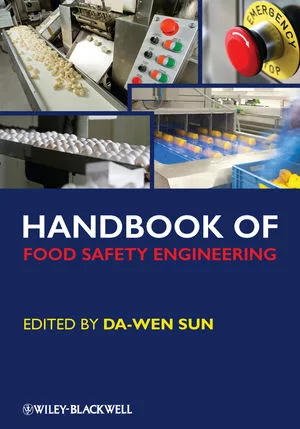Achieving Higher Standards of Food Safety

Despite the United States having one of the safest food supplies in the world, the U.S. Centers for Disease Control and Prevention estimates that each year nearly 48 million people (roughly one in six Americans) are sickened, 128,000 are hospitalized and 3,000 people die from preventable foodborne illnesses.
In an effort to make the nation’s food supply safer, the Food Safety Modernization Act (FSMA), the most sweeping reform of the country’s food safety laws in more than 70 years, was signed into law by President Barack Obama on January 4, 2011. It aims to ensure the U.S. food supply is safe by shifting the focus from responding to contamination to preventing it.
“Rather than just react to outbreaks, we are requiring food facilities to take measures to prevent them from the get-go,” says Jenny Scott, M.Sc., a senior advisor in the Food and Drug Administration’s (FDA) Office of Food Safety. Food manufacturing professionals will need to think upfront about what could be harmful to consumers and then put controls in place to minimize or prevent those hazards.
As of August 30 of this year, food manufacturers were required to comply with FSMA’s Preventive Controls for Human Food rule, according to the Grocery Manufacturers Association. Produce safety restrictions are due to kick in next, on December 31, 2017.
Preparing for Compliance
For many of the processors attending ProFood Tech, compliance with the upcoming deadline will be a major priority. According to the 2016 Food Safety Modernization Act Update Report published by PMMI, The Association for Packaging and Processing Technologies, 30 percent of industry stakeholders said they were only “somewhat prepared” for FSMA compliance and 12 percent said they were not prepared.
Rick Gessler, director of marketing and strategic account management for packaging equipment supplier, Delkor, says he’s seen only “a limited number of customers that have understood and prepared for” the FSMA. “The general sense we have is that many companies understand the [deadlines] are approaching and haven’t started the work toward compliance, but know they must.’ My response is ‘how about now?’”
The fact is from conveyors to fillers to vision inspection systems, there are many ways food manufacturers can take steps now to make sure they are prepared for FSMA requirements.
Looking for quick answers on food safety topics?
Try Ask FSM, our new smart AI search tool.
Ask FSM →
Cleaner Conveyors
A good place to start is one of the biggest parts of any food operation: the conveyor. Depending on the design and level of maintenance, the food conveyor line in a plant can be a haven for bacteria growth. With all the intricate moving parts and nooks and crannies, food particles can get trapped in hard to reach places, and there is also a vast amount of surface area that could potentially become contaminated. Therefore, a conveyor that is quick and easy to clean—even in hard to reach spaces—is important.
“Contamination is a big concern for brand owners in the produce, baking and snack, dairy, meat and other industries,” points out Stacy Johnson, senior marketing manager, Dorner Mfg. Corp. “The need for sanitary conveyors is a common thread to all of these market segments. They need conveying solutions that can be quickly disassembled, cleaned, sanitized and put back into service in as little time as possible. Processors cannot afford to have a system down for an hour or two after each shift to clean equipment. That’s lost time and revenue.”
Johnson says Dorner’s stainless steel, sanitary conveyors—AquaGard and AquaPruf— are designed for fast and effective cleaning. The AquaPruf line can be disassembled, cleaned, sanitized and reassembled by one person with no tools in about 10 minutes.
“We’ve noticed that a misconception exists with some people who think that by purchasing a stainless-steel conveyor they’re getting a sanitary conveyor, but that’s not always the case,” explains Johnson. “Achieving a sanitary conveyor depends on the initial design. Small nooks, crevices and fasteners can become catch points for water, food particles and other particulates—which are the perfect breeding ground for bacteria. The solution is eliminating all catch points from the conveyor.”
The two conveyor platforms are targeted at different aspects of the production operation. AquaPruf is for use in the food manufacturing and processing side of production, such as when moving raw chicken and other unpacked food. Its patented, welded frame construction has rounded frame members and minimal fasteners in the food zone, for instance. AquaGard, on the other hand, is for use in moving packaged food. The platform is still built to sanitary standards and can be washed down, but doesn’t have all the added sanitary attributes of the AquaPruf line. The AquaPruf Vertical Belt Technology conveyor is engineered to move bulk food in straight-up 90-degree sanitary applications.
Safer Filling
The growing U.S. dairy market—expected to be valued at more than $65 billion by 2018—will also be challenged to keep up with the enhanced regulations under the FSMA. Dairy producers are among those seeking filling and packaging equipment with the latest hygienic advances.
Two organizations provide hygienic design certifications for filling machines: the European Hygienic Engineering & Design Group (EHEDG), a consortium of European Union equipment manufacturers, research institutes and public health authorities, and the 3-A Sanitary Standards, Inc. in the U.S. Machine designs incorporate their recommendations.
Bosch Packaging Technology upgraded its Ampack carousel filling machine in early 2016 to comply with the most challenging hygienic design guidelines needed for the 3-A SSI certification. The entire portfolio of Bosch’s dairy filling equipment was already EHEDG approved. “At Bosch, we are continuously investing in equipment upgrades, making them easier to use, easier to clean and eliminating any areas that can cause product contamination. Our goal is not only to meet the certification standards but also the production goals of our customers,” says Rich Müller, sales director, Osgood Industries Inc., which is part of the Liquid Food product division at Bosch Packaging Technology.
“One example of how we are trying to achieve this is the current standardization of the aseptic module to further improve hygienic design—as well as accessibility and ease of maintenance. An improved hygienic design is also the base from which we achieve a further reduction of cleaning and sterilization times and elongation of production cycles,” Müller says. “This is one of the key tasks to further improve production availability of the filling machines.”
As food safety regulations continue to strengthen, U.S. dairy producers are seeking ways to prevent product recalls. The Ampack carousel filling machine’s 3-A SSI certificate assures that their product will be handled hygienically through the filling and packaging process, contributing to high product quality and ultimately consumer safety.
Fewer Product Recalls
When first introduced, one part of FSMA that received a lot of attention was that the FDA attained mandatory recall authority for the first time. To help food companies get a better handle on recalls when they happen, a state-of-the-art vision inspection system, much like the systems Delkor offers, can be important.
The Delkor Confirm QC Series Vision Inspection System has a built-in camera to reliably detect loose lids, damaged products and other food safety concerns before package loading. This system fits around an existing line, eliminating the need to cut the existing conveyor. A nondestructive, soft reject mechanism facilitates manual inspection.
The Delkor Confirm RC Series Vision Inspection System is up to 99.995 percent effective and uses up to 10 full resolution cameras and optional infrared or ultraviolet lighting. Reliable sensors prevent mislabeling, packaging flaws, defects and class 1 recalls and it features a patent-pending reject mechanism, and stainless steel construction for easy washdown. The RC Series compares UPC, 1D or 2D codes on the container body to coding, graphics or text on the lid to prevent mislabeling—a major cause of food recalls.
As Delkor’s Gessler explains, “We have developed machines to help with label verification and making sure they can talk to upstream and downstream equipment.”
About preparing for FSMA in general, he adds, “We have worked with customers who have taken some of these measures, but it’s too often regarded as an after-thought. At Delkor we work to stay ahead of the curve for emerging requirements like these.”
Learn More at ProFood Tech
It’s one thing to read about all of these FSMA-geared innovations; it’s another thing to see them in person. Attendees at the inaugural ProFood Tech trade show this spring will have the chance to do just that.
ProFood Tech is the only event in North America focused exclusively on all food and beverage sectors, more than 400 of the world’s top suppliers, 150,000 net square feet of exhibit floor and 45 hours of blockbuster educational programming.
ProFood Tech takes place at Chicago’s McCormick Place on April 4–6, 2017, and is powered by global trade show leaders PACK EXPO, Anuga and The International Dairy Foods Association.
For more information or to register, visit www.profoodtech.com.
Sean Riley is senior director, media and industry communications at PMMI. Learn more at PMMI.org and PACKEXPO.com and PMMIMediaGroup.com.








